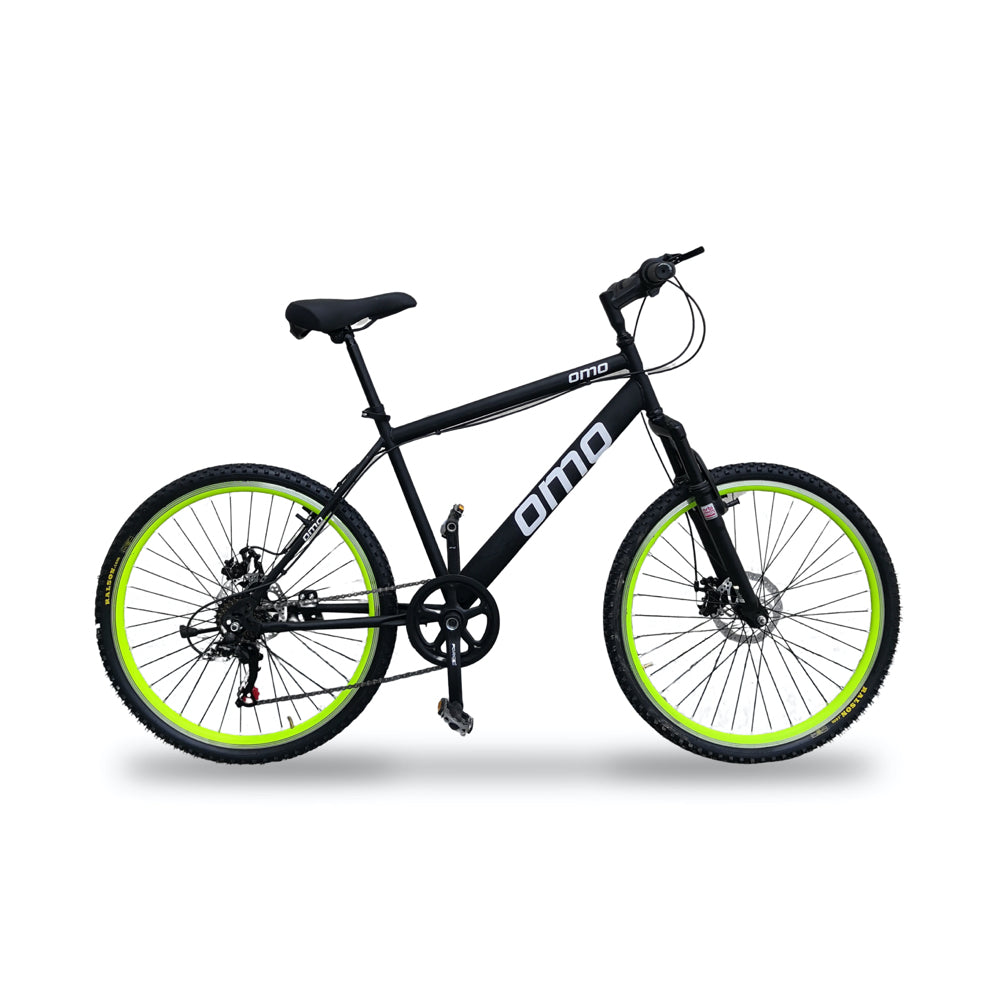There are no regulations or markers on bike tyres, so you have to use your own initiative – for road tyres, you’ll start to notice a flat spot, and seeing carcass is a definite sign they need replacing.
Mountain bikes suffer degradation to the knobs and when they’re gone, the tyre is pretty much useless and will need replacing.
If you are running a tubeless tyre setup and haven’t ridden the bike in some time, pop the bead open and check the sealant hasn’t dried out.
Though inner tubes do lose a small amount of air over time, returning to your bike to see a fully flat tyre suggests there could be a puncture. You don’t want to deal with this mid-way through a ride, so take the time to fix a puncture – even a slow one – before you head out.
Pump up your tyres to the correct tyre pressure before riding. Note that optimal tyre pressure differs between road and mountain bikes.
How to safety check your bike’s suspension components:
Next, inspect your fork for hairline cracks or any other kind of damage. If you have a suspension fork, check the stanchions for scratches or for excessive suspension fluid near the bolts.
It’s worth noting that a small amount of oil on the stanchions – or a witness mark, as it’s known – is perfectly normal and expected on some forks.
With front and rear air suspension, it’s also worth checking the sag is set correctly about once a month.
How to safety check your bike’s cockpit

Moving up to the headset, rock the fork forwards and back with the front brake applied to see if there is any obvious play. If you notice the bike knocking, try to isolate where it’s coming from by placing your fingers on the joints.
Next, lift the wheel and turn the bar slowly. If you feel any grinding or resistance, it might be a good idea to service your headset or replace it.
Check the stem is secure by holding the front wheel straight with your knees and pushing on the bar. You should be able to apply a reasonable amount of force without the stem turning on the steered tube.
Stand over the bike and rotate the bar forward and back – if you have drop handlebars, push on those too. There should be no movement of the bars or the grips.
On bikes with flat handlebars, you should also check that the brake levers and shifters are fixed securely.
How to safety check a bike frame

Moving down the frame, check any frame accessories such as a bottle cage are attached properly and not rattling
You’ll also want to visually inspect the entire frame, especially around the welds, if applicable. If you find even a small hairline crack, you should get it checked out by a professional before riding.

If you have a frame with a suspension system, check the shock mounting bolts are holding it firmly in place and that the shock is in good working order, as with the fork.
If you are buying a second-hand carbon frame, check out our comprehensive guide on what to look out for.
How to safety check your cranks and pedals

Give the cranks a spin in the backward direction, so you don’t spin up the rear wheel. As long as the drivetrain is running smoothly, the bottom bracket should also be running smoothly.
Inspect the chain rings for damaged, missing or excessively worn teeth. Worn chain rings will wear to a shark-fin like profile.
Rock the cranks toward the frame to check for any grinding, resistance or play. If you feel any play, it may mean you need to replace the bottom bracket.
Check your pedals by giving them a spin. A well-serviced pedal won’t spin freely because the grease should stop it. Again, check for play by rocking the pedal body. If you find your pedal is not performing correctly, it’ll need to be replaced or serviced. Check your pedals are fitted correctly while you’re at it.
If you have clipless pedals, check the metal or plastic cleat on your shoe is not overly worn, is securely bolted and clips in and out with your preferred resistance.
How to safety check your saddle and seat post

Periodically remove the seat post from the frame and give it a clean.
If you have aluminum, titanium or steel components, apply some grease before reinstalling. If you have either a carbon frame or seat post, you’ll need to apply a specific carbon grip paste. This paste is grease-like, but contains small particles to increase friction between components.
A stuck seat post can write off a frame, so be diligent with this step.
When the seat post is reinstalled at the correct saddle height, check the saddle is securely mounted in the clamp.
How to safety check the rear wheel and drivetrain on a bike

Repeat the procedure performed on the front wheel at the back, checking the hub, tires and brakes for play, effectiveness, rubbing and wear.
Pedal by hand and check that the chain runs cleanly, with no stiff links. Shift the front and rear derailleurs through their range of gears.
The chain should shift up or down one set of teeth for every click of the relevant shifter. If the chain doesn’t shift in this way, is hesitant, or drops off the teeth, then you may need to on your bike gear.
Regular pre- and post-ride checks are important, but getting to know your bike can mean you identify problems as soon as, or even before, they arise.
Keep an eye out for irregular mechanical noises, frame creaks or unusual behavior while riding, and check them out as soon as possible.
But like we always said, please let me know if I left something, or you have any queries please comment below, our team will love to help you out.




